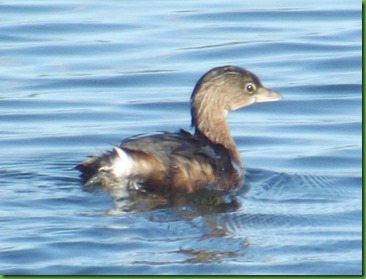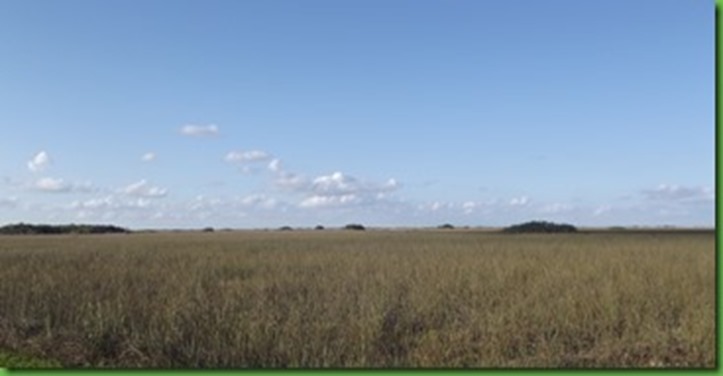Tuesday January 28, 2014
Flamingo Campground
Everglades National Park
We have been at Everglades National Park for 10 days with no phone or internet. This is the 5th in a quick series of posts about those days. I wrote them while I was there and am publishing them two or three per day until I am caught up. If you’d like to see #2 A Fabulous Day on Florida Bay, or #3 Not Such a Great Idea: Bear Lake trail and more, or #4 Morning and Mzarek in the Everglades, published earlier, click their titles. The most important one to have read to get the most out of this post is the one published earlier today. There is a link to it at the end of the next paragraph.
Remember those really beautiful eyes?
They eyes of the cormorant, the vulture and the anhinga that I took pictures of this morning on the Anhinga Trail? They are important to synchronicity of this post. If you have not read that one, I really hope you will. There is a link to it HERE.
It’s after 1:00 and after more than 4 hours on the Anhinga Trail, we are headed for the Coe Visitor Center.
After we have spent more than our entire morning on the Anhinga trail which is just over half a mile long. We drive further up to the Coe visitor center where we have a bite of lunch and then some internet time before spending the rest of the afternoon enjoying the exhibits as well as the wetlands and pond behind it.
The visitor center doesn’t have wifi but our verizon hot spot does get a fine signal up here at the northern end of the park.
I do a little business, answer a couple of emails and post the first blog from the Everglades and the only one which will be posted before our 10 days here are up.
Spending time in the visitor center really enhances your experience in the Everglades.
The first time we came to the park, we stopped first at this visitor center which is a wonderful introduction to the Everglades with an excellent film and exhibits explaining the numerous habitats in this wet land, the importance of elevation here and the controversy over how the water is to be used among many other things.
David listens on the phone to each of these competing interests discuss why his need for water is the most important. The visiting tourist, the fisherman, the farmer, the environmentalist, and the national park ranger. The first voice was of a local resident but she was not one of the figures in the display. She of course talked about water for her yard and plants and the high cost of it.
The explanations of what has happened to the natural water supply in the name of “progress” is quite sobering. How can we ever bring back the natural flow of waters needed by the Everglades ecosystem and all those dependent on it?
The center is informative and lovely. It even has art work which is instructive on the walls and the floor.
Shadow wading birds are identified as they march along the wall. A stunning mosaic floor map of South Florida shows all the different types of land use by color. The large dark spot is Lake Okeechobee the heart of the Everglades water.
There are an exhibits on the Native Peoples, the Miccosukee and the Seminole, who still live on reservations at the edges of the park.
This map shows how much of their original lands they have lost. Present Day reservations are in yellow, red and black in comparison with their reservation lands in the mid 1800’s. In spite of all the pressures, the Miccosukee Tribe of Indians of Florida have successfully preserved their traditional culture by retaining their native language, living in strongly matriarchal family units, practicing traditional medicine and utilizing ancestral and modern skills to create a viable economy.
Everglades National Park like many in the system supports artists in residence and has a strong local artist program.
As we moved around the center, I stepped into a room and was completely surprised to find an exhibit entitled Eyes of the Everglades. It is a series of oil paintings of forty eyes of animals that inhabit the Everglades. The artist, 26 year old Cynthia Diaz of Miami, states that her “goal for the series is to have everyone who looks into those eyes not only appreciate the beauty in them, but also feel a connection to who the animals are. I hope people realize that what we do with our lives will affect the animals and what happens in their lives will in turn affect ours”.
I find this to be a very moving exhibit and coming from someone so young, it gives me hope that perhaps the young people we will be leaving this gorgeous planet to will be more concerned about it as a group than we are. I wish I had been here just a few days ago when the Center sponsored a meet the artist reception. I would have liked to tell her what an amazing set of works these are.
My pictures cannot begin to do justice to the amazing paintings. The animal’s name is listed below the eye. It is a remarkable installation and displayed in what seems a perfect manner hanging as they are in mid space in the room so that your eyes are filled with eyes as you enter.
I have listed the animal’s name after its eye painting. Try to look only at the eyes and not at the name of the animal until you have fully taken in the eye. You will have more the same marvelous experience we had since the names were on the back of the paintings.
The Sandhill Crane
The Male Anhinga
Cottonmouth Water Moccasin
The Red fox
Roseate Spoonbill
The Little Green Heron
Red Shouldered Hawk
American Crocodile
I obviously didn’t take pictures of them all though I now wish I had.
We leave the exhibit and go out back where we watch what I think is a little grebe all alone on the pond. Where are his fellows? Where is anyone else? I wish I were close enough to look into his eyes.
As we leave and are driving back down the road, through the varied habitats that make up this marvelous park, I am reminded of Marjorie Stoneman Douglas’s description of it as a
A River of Grass.
May it always be so.
![DSCF5310_thumb[1] DSCF5310_thumb[1]](https://blogger.googleusercontent.com/img/b/R29vZ2xl/AVvXsEhvrraufVLZqSX5e-ywq4ZS6UBy6dTsi6o1uOK2qW-sHJDozufO8wG3YYVTny9yL-GAOLzPXKvAysx7ekBEv7B9WuwIh36cR0fr3zAW4KWXtVA_D_0cqNIwaug5bg6J-eBGKZn8VSwk-FTy/?imgmax=800)
![DSCF5311_thumb[1] DSCF5311_thumb[1]](https://blogger.googleusercontent.com/img/b/R29vZ2xl/AVvXsEga3tLamd40kUy87hk-Oj8tsebiw3mYFcMT4I-oGdqczQngNGEjey0dpWnF1idHSiAckgiQxgFR5-CSq976wT-P643XfqqfXK4zjCBPuyzMvZfevX6GBkjcAbVr4kBGb6xvzLgY-Zb-YHXS/?imgmax=800)

![DSCF5344_thumb[2] DSCF5344_thumb[2]](http://lh3.ggpht.com/-JLQBSSsW5Pc/UvGElK_VyrI/AAAAAAABAQo/29b2qC9Kh-w/DSCF5344_thumb2_thumb.jpg?imgmax=800)
![DSCF5342_thumb[3] DSCF5342_thumb[3]](https://blogger.googleusercontent.com/img/b/R29vZ2xl/AVvXsEi4qIZtLnCoIBgeBMregTjU_L3khqnux3PaxoKkLxx-ZHcLx2nm3E9WVeXT2-QvKPd-54YvDoBAwSIlqtkP779N7Lq5tVSWZZJarW5wcyfYlqIdpOfFVLDcKooJpRaQkmDpfx8axDb_9Hw9/?imgmax=800)
![DSCF5343_thumb[2] DSCF5343_thumb[2]](https://blogger.googleusercontent.com/img/b/R29vZ2xl/AVvXsEha0RuGpAmQZR5gRcEoWAstcUEar4DgbSSplbzzPgVOpbbwT6avXs7-kAUR_R32BqYbdJDP3Ru_0xor2d4PyAJdpwE9EPDDncGA0jgdlPEQGI6yqHe-DfgvxTs87WBOYaTp_kZpvJQqgzmJ/?imgmax=800)
![DSCF5345_thumb[2] DSCF5345_thumb[2]](https://blogger.googleusercontent.com/img/b/R29vZ2xl/AVvXsEh9alBsnNydGS-UTww8w5TeBDkxyT2mda_1EfjaBWIAnPZcJLeZAi1gNFQYya3o47hLI29FCmo2UI1_RY0eR0DQzB-Qp4leM_e4XJCMo04oid8VDI27yul5iIzcXnrwSFwKoDgnUY2Mdeg/?imgmax=800)
![DSCF5350_thumb[1] DSCF5350_thumb[1]](https://blogger.googleusercontent.com/img/b/R29vZ2xl/AVvXsEiGHjVoEOk2LFqKoe9bKg2FqBfJpMuGamYGZDMFGUBehZ0Pt6Kl5WutA6qCfXXpxixpvhqhXH8jLT6SAb2U2am1g5jus1cmr0nhiy77xaXfKPC90cqM20oa2nfKttXNqQgkE44YfGn-Ado/?imgmax=800)
![DSCF5351_thumb[2] DSCF5351_thumb[2]](https://blogger.googleusercontent.com/img/b/R29vZ2xl/AVvXsEh3LAuBDQiif_JV9zr7zi_cQEdii7XVCqT2s2h3qvAfIUm-OEliDfndfB7T-Os-czmkoKIcY1QstwSZT_rzDvIXvRay1JTDlY0XFUDffjm12GD5PNu8f-Zrs4qmeiALLso4IXzPX2kAkho/?imgmax=800)
![DSCF5352_thumb[2] DSCF5352_thumb[2]](https://blogger.googleusercontent.com/img/b/R29vZ2xl/AVvXsEikq9rApS_6aJTbY2FS_b7Ormkk0AFhdD9Gw1oooq63_zfwqosypzuOcej4whFDvKpWv99ohKJ2q3uCuWfndMgpl3XinbQuT2z0VKDEYq1H80uQI4YcedF7HKtQH8QAIuEduCrJX2Fq99R2/?imgmax=800)
![DSCF5341_thumb[1] DSCF5341_thumb[1]](https://blogger.googleusercontent.com/img/b/R29vZ2xl/AVvXsEgd7nO4omALwTxVVmtZoChCWdsoT_F9CunLbZvhZ-vcFU_232we1wyKJuU0aGW7lSjEcCHxeMYVWGWLfHgesbZ9hyphenhypheny5Jok6F-fTHYp33jXid0GMdmD6hsskNtUgIf9B-_jUlz5p_JA7Ws4d/?imgmax=800)
![DSCF5337_thumb[1] DSCF5337_thumb[1]](https://blogger.googleusercontent.com/img/b/R29vZ2xl/AVvXsEgxAEdfc4HuvdNwqjMQm18y_RWVxHO7h-khWgcLjgo0t4hjG0OvQXV2XdMSuVe7RxOoXglfGoiuo7zk1LF7lf-DE0_LfaAhgAjXCZoJ41jT7fIjSyTRFEsCuaye0SJHvbadlVhGNKKwz1w/?imgmax=800)
![DSCF5320_thumb[1] DSCF5320_thumb[1]](https://blogger.googleusercontent.com/img/b/R29vZ2xl/AVvXsEiNnB2Osqy8gXbIxd-qi0E4hpMdo1TiExwm3lqPOLJQqSDE4alp0US4FymzpILxRcuYjYa4oBwlzNUOBrlvgHS75tNDEYmAzXmxek3w-SYJjvFIMfj5IkO1xHt95N8yxN6Y-6ZpYcd34ege/?imgmax=800)
![DSCF5322_thumb[1] DSCF5322_thumb[1]](https://blogger.googleusercontent.com/img/b/R29vZ2xl/AVvXsEigZWLLC8bdoHyU1bSuBLda42r6il9QogN7HMRSn2qmUve8Xz0H1bvpyhVQDNuC-AJTneBZKhZlKpPsPuE3tLRxHdQPFZO3G9sGHRGng1ufL7EoctFsLQaPBm9bEnkZhXML7ggbJ64XYWg/?imgmax=800)
![DSCF5324_thumb[2] DSCF5324_thumb[2]](https://blogger.googleusercontent.com/img/b/R29vZ2xl/AVvXsEjKp15-S2De5xqiOALBzCzUlmfYIsSYwml-aW0AmYJiD-JIGGLBY9WJkGpvPlJCj7L_67Cej0C9-A6VfDIMyPd1yqAXI1o9ibh0xgDcgQbdFJzNR2lBGxO8veL9xaAgoPyuT2y1YHQaTz8/?imgmax=800)
![DSCF5326_thumb[1] DSCF5326_thumb[1]](https://blogger.googleusercontent.com/img/b/R29vZ2xl/AVvXsEjGkHlMOj-F8cU0eyz4gw3R9b1-3_JHWoQU-aS3h8GTeP-4jMBwa5QNXHiVB4BrADkL9hsoYakV2R4-0ZPnMS9GUW83VWVQOfO6DiE8A0YKsXJySuanW8suopO34kzPfvBFRJNKt5DifH7z/?imgmax=800)
![DSCF5329_thumb[1] DSCF5329_thumb[1]](https://blogger.googleusercontent.com/img/b/R29vZ2xl/AVvXsEiA1hbhRnswX-dJdDRcwV-pcpS-8fXpqb55gNndGUSBn8_zId9fWrmw9Q0u_TBzZvZcjFeabTi6CJQYaL2Mtr4cSIIvcxN7wG8flpaNFxy7QFBkkuCRoLQU4mdP0N92WHJ6e1REQm4WxXL8/?imgmax=800)
![DSCF5331_thumb[1] DSCF5331_thumb[1]](https://blogger.googleusercontent.com/img/b/R29vZ2xl/AVvXsEgPvCi0wzeobrXntO-IHW_AjGHpx7hHUbxz1e3MyPOvz51z7OIXkfX4nZ0i8lSJRINu_Wf1u0G9o_twIomo5JoJhyphenhyphenPEmsUkEHQPwOwvBz1nG0G0E6F_Drq6Uz8zDBW6wIMs8x7KAfSHypuo/?imgmax=800)
![DSCF5333_thumb[1] DSCF5333_thumb[1]](https://blogger.googleusercontent.com/img/b/R29vZ2xl/AVvXsEjokeGS07PfU7p-mDyYEsfpfOCi2_dWyDghxveu-FMQpxbf7gVL2A3Rfjg5dyVDTu-Nyx3NN1iV1u2vlp3wiYOxXlTwB9SS1BUhV9It5C7Hhka7VWkRFGPkER9yOvrZaT0hRRRlC1RKLccp/?imgmax=800)
![DSCF5335_thumb[1] DSCF5335_thumb[1]](https://blogger.googleusercontent.com/img/b/R29vZ2xl/AVvXsEjIZQ66uw3eT9H7QoyZZ1P_oEsg8a4f4r2CSLUU6eOtVN285fGOw67lay0Qfb2TyRwnupGtDyHRlqAAxoPI1smxYIKrEgHld_OqFTgGYE-8Q5Hj4rSzlTpp_JAoKd_q6-gLCDHcYQF916Mt/?imgmax=800)



A very moving post in many ways. I need a tissue...
ReplyDeleteFirst I have to go check where Coe is located, we will be camping at Midway. Then I have to go see if the "eye" exhibit will still be there....so incredible
ReplyDeleteExactly ... May it always be so... The eye paintings are brilliant!
ReplyDeleteI wished you had captured them all too..... great post!!
ReplyDeleteHaving worked in ophthalmology, I am always fascinated by the shape of animals pupils. Outstanding paintings!
ReplyDeleteI remember the male anhinga's eyes where a piercing blue-green...like nothing I have ever seen:o)) We will have to spend more time at Coe next visit to the everglades!!
ReplyDeleteTo tell the truth I was surprised that the eyes of the croc and the water moccasin looked no more sinister than any of the birds.
ReplyDeleteI am so much more aware of water consumption here in California where they are in extreme drought condition. I love the paintings! I got one right :-) What a great way to portray them.
ReplyDeleteReally cool - but to tell you the truth, I like your photos of the eyes better!
ReplyDeleteLoved the eye pictures too!
ReplyDeleteVery cool paintings. Love them.
ReplyDeleteThe Artist in Residence program is wonderful. We have come across it in many of the big parks and love how they share nature through incredible artist means.
ReplyDeleteWow what a cool exhibit, never have seen anything like it.
ReplyDeleteThe "eyes" have it. What an amazing "eye-deer" (puns intended if you couldn't guess). When staring at all those eye pictures, did you blink first? :c)
ReplyDeleteAnother treasure in the Everglades, such a beautiful area!
Eyes! So beautiful! I love this artist's work- how you could look into any of those eyes and not see the animals' soul? Thanks so much for sharing these.
ReplyDeletexxxooo
Absolutely amazing. Thank you so much.
ReplyDeleteGood tour!
ReplyDeleteA lovely exhibit ... and a reminder that it is important to look everything and everyone on the eye.
ReplyDeleteLOVE the eye insight! And the tie-in with your previous post of eye photos. Some of them are a bit haunting. I am going to start paying closer attention...
ReplyDeleteThat was a beautiful exhibit. I liked looking at the eyes without seeing the name. I think I liked the crocodile eyes the most instinctively. The colors around the eyes are exquisite too. The red fox is striking indeed. The presentation was very nice and the idea a unique one. I would have enjoyed that museum too!
ReplyDeleteThanks for sharing your appreciation of this exhibit on the eyes. I was so overwhelmed by all the information in the Visitor Center that I almost gave it a short shrift, but I am glad I did not. I never really noticed how beautiful each of these creatures eyes are.
ReplyDelete